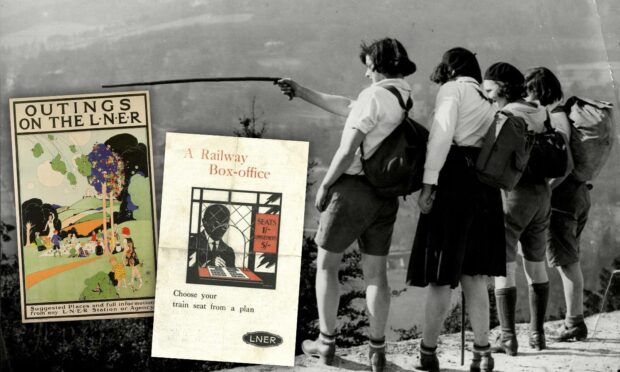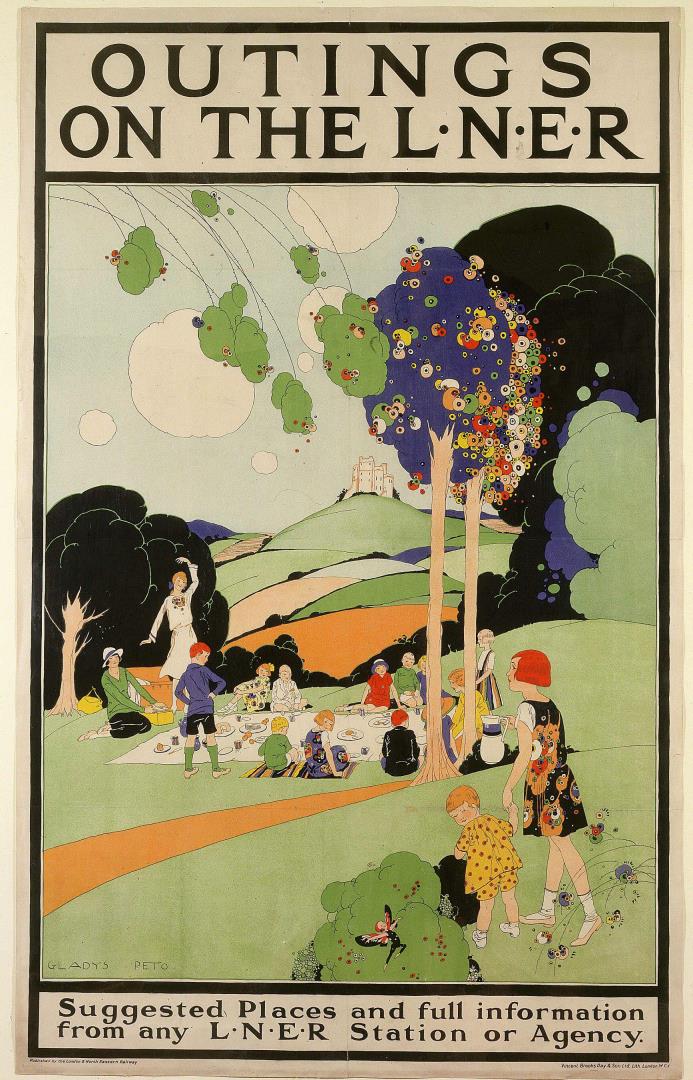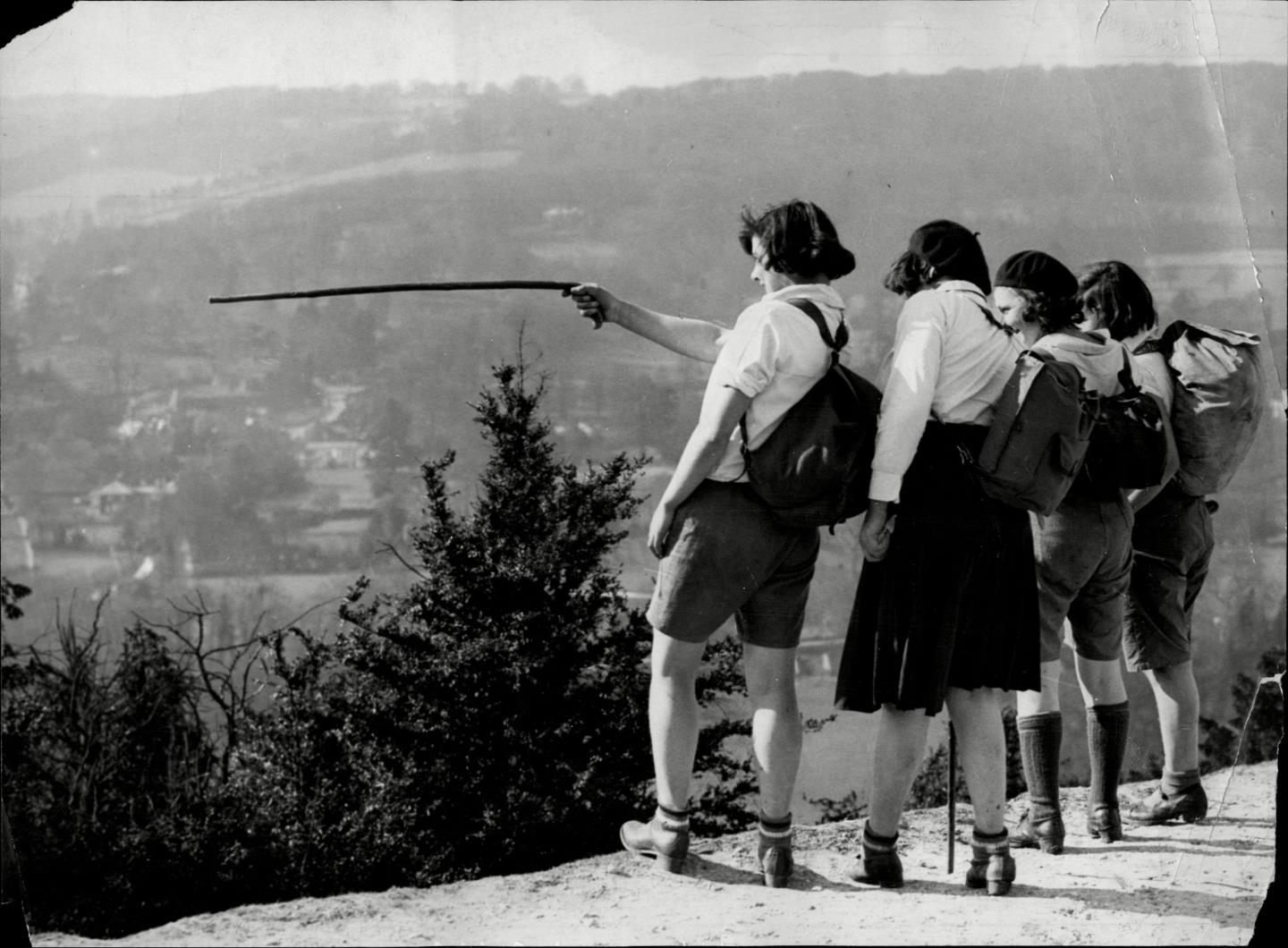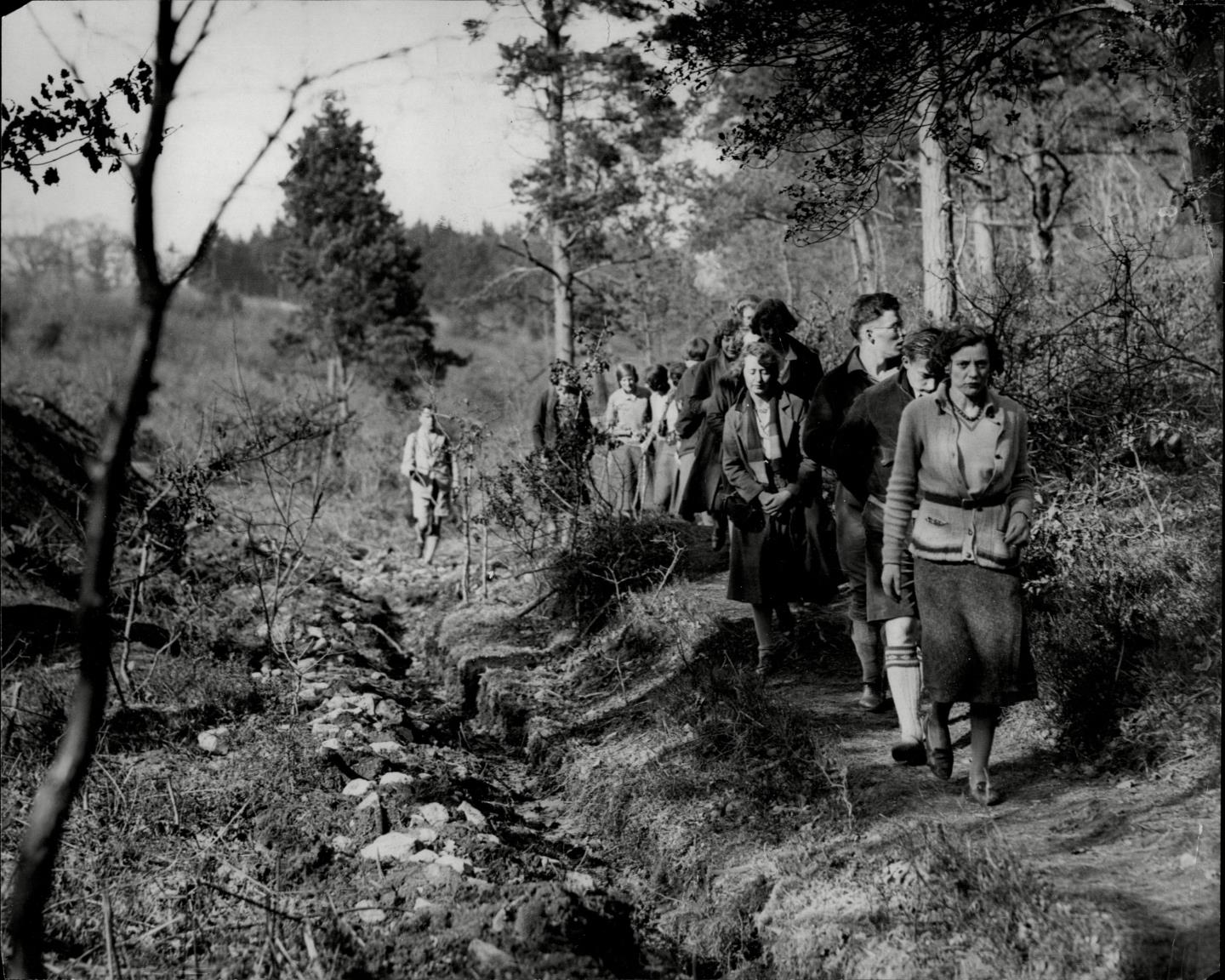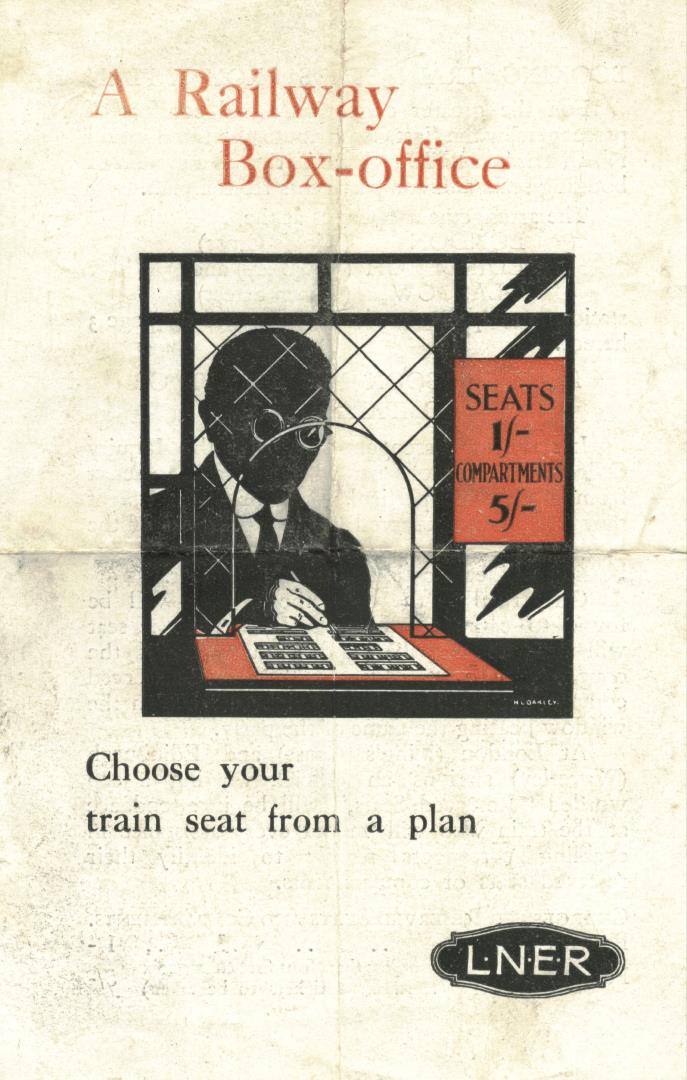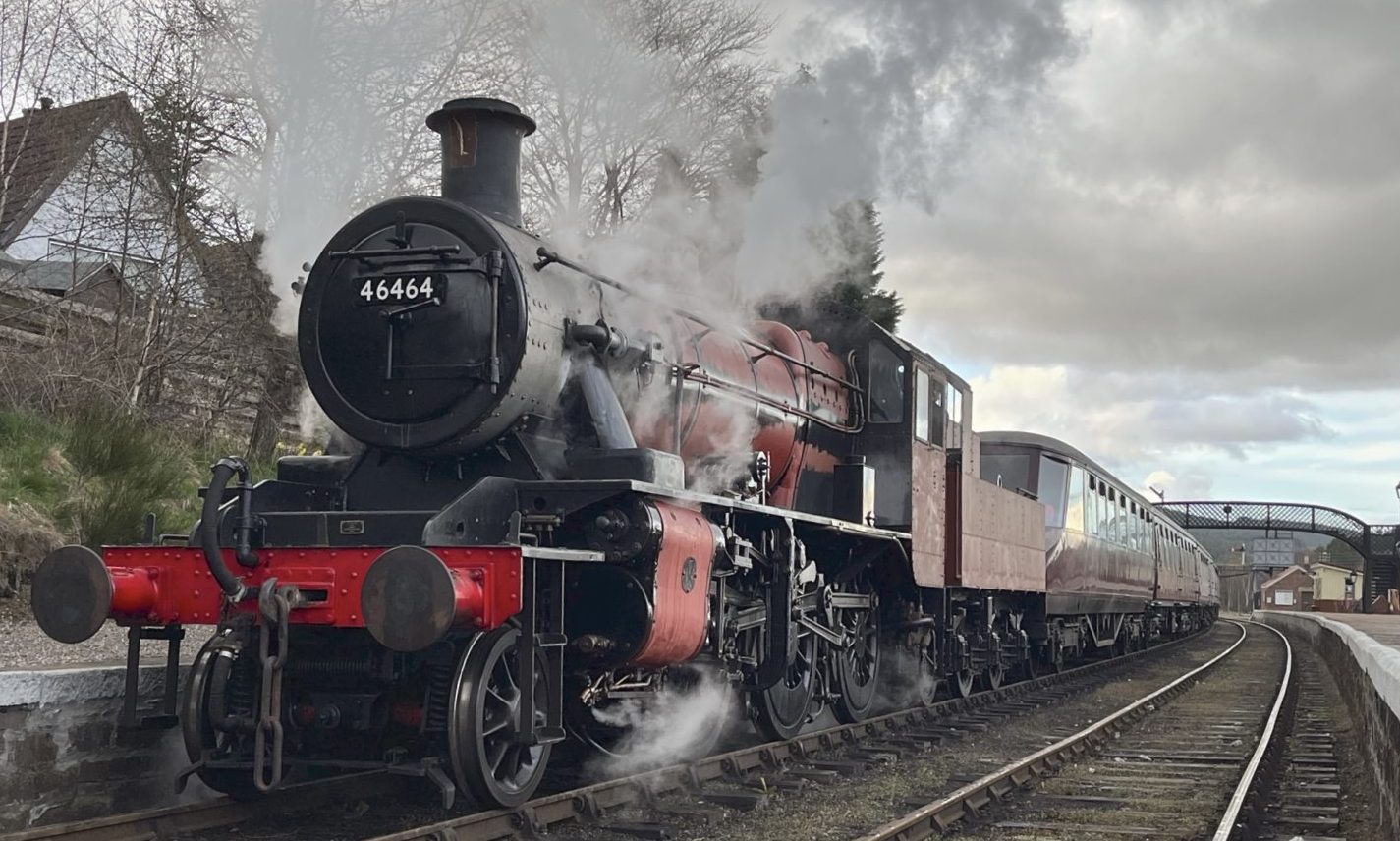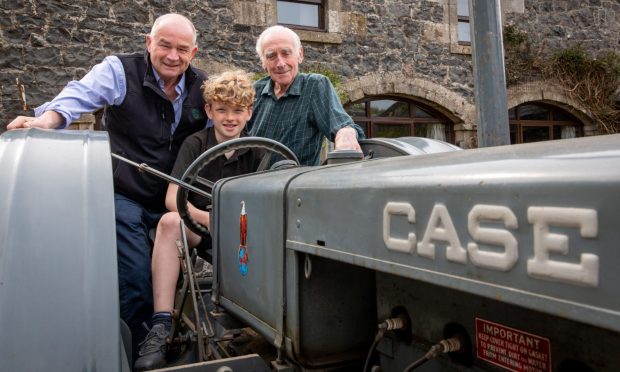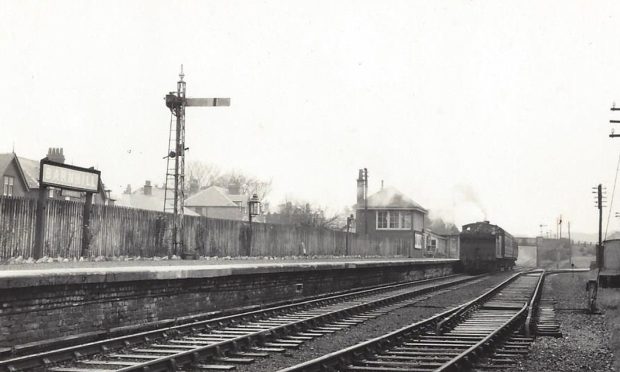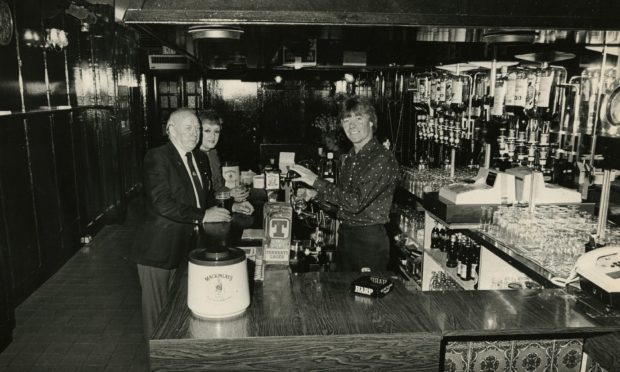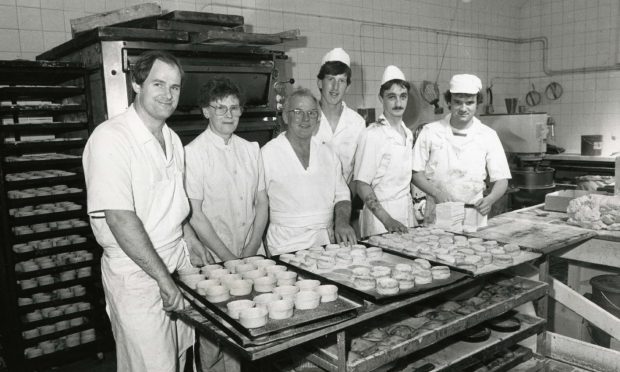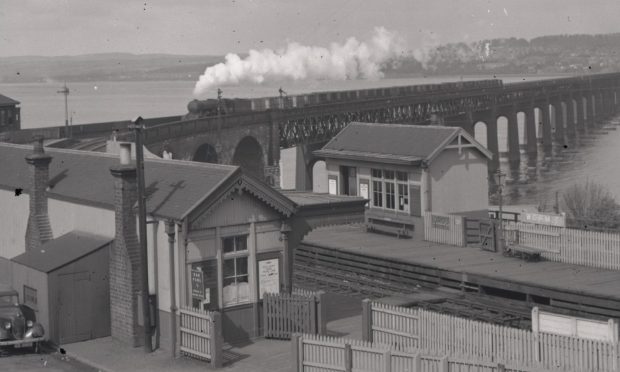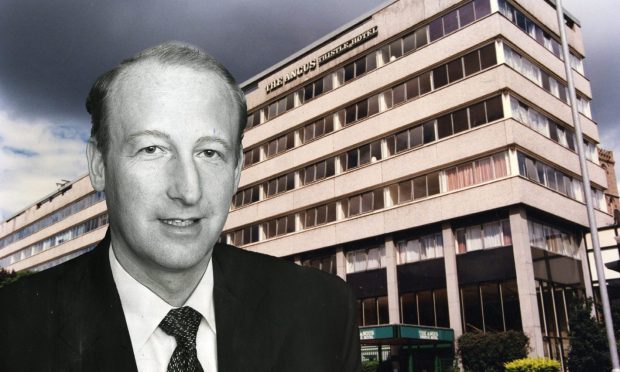In June 1932, a train steamed out of Tay Bridge Station, Dundee, at 2.20pm, bound for an unknown destination.
The train was billed simply as the “2.20.”
It carried no destination boards, and neither the porters nor the stationmaster knew where it was headed.
The driver had been sworn to secrecy.
The 200 passengers, most of whom were members of Dundee walking club Holiday Fellowship, were about to embark on their most thrilling journey yet.
George, the driver, in his cabin high up above the platform, rubbed a brass gauge with a bit of cotton waste, and admitted that he was stopping at St Fort.
“We’re stopping at Fort.”
He said. “Then we’ll get instructions where to go.”
“That’s right,” corroborated Bill, his fireman and disciple, “We’re stopping at St Fort and then we go on to—”
But, as if by accident, George turned a tap, and the station was filled by the noise of escaping steam.
As the noise subsided, Bill finished his momentous sentence.
“And then we carry on to an unknown destination,” he said blandly.
In the train — their haversacks filled with sandwiches and their hearts with the call adventure — were 200 young men and women.
“Where are we going?” they shouted.
“But please don’t tell us – that would spoil everything!”
These men and women were members of Dundee’s walking clubs – the Holiday Fellowship, the A.O.F. Rambling Club, and the Co-Operative Holiday Association.
The mystery train was the prelude to a Saturday hike that had been arranged, in co-operation with the London and North Eastern Railway Company (LNER), by Mr Tom S Hall, who was the editor of the Scottish Ramblers’ Year Book.
It was the sixth mystery trip he had organised for LNER.
He boarded at St Fort, and then proceeded to lead the train to its mystery destination.
The hordes eventually embarked at Newburgh with great excitement.
The passengers then set out in groups, each with a leader, for a walk of about 10 miles through countryside seldom explored by ramblers.
They went by White Craig and Purliehall Farm to Lochmill Loch.
There they picnicked, and proceeded to Abernethy, Pitcairlie Hill, and Stewartshill.
The party then walked back to Newburgh by the side of the river.
After 40 miles of rail travel and 10 miles of walking, the train and its passengers returned that evening to Tay Bridge Station at 8.32pm.
The return fare cost two shillings.
Mr Hall’s influence saw the tours “increase in number and broaden in scope”.
They would eventually become part of a craze that swept the globe as rambling became more popular and more walking clubs and groups sprang up.
They provided free entertainment although not everyone was happy.
Mystery hikers often received the same negativity as today’s “glampers” with some critics dismissing these hikes as senseless stunts.
The success of this first mystery trip sparked a follow-up on August 28 where 100 hearty travellers from Dundee travelled to Alva in Clackmannanshire.
According to the promoters, even the train conductors did not know where they were going until they were presented with sealed instructions.
The advert suggested the round tour “would include a 120-mile rail journey, a walking distance of about 10 miles to the summit of a well-known hill, 2,000-feet high, and grass to the top, commanding a view unsurpassed in Scotland”.
A grand rally with hikers from Glasgow, Fife and Edinburgh would take place on the summit and participants were advised to take a packed lunch.
The special train left Tay Bridge Station at 9.57am.
A report in The Courier the following Monday gave details of the mystery hike where a 76-year-old was among those who made it to the highest point in the Ochil Hills.
It read: “Encouraged by the success of the Newburgh venture a few weeks ago, the company on this occasion sent the adventurous passengers to Alva, whence they set out to climb Ben Cleuch (2,364 feet).
“On the hike between Alva and Tillicoultry, the Dundee contingent was joined by parties each about 100 strong from Edinburgh and Glasgow.
“The return journey to Dundee was from Tillicoultry after about eight hours in the open.
“The summit of Ben Cleuch was the mecca of the majority of the trippers, and among those who reached the peak was a gentleman of 76.”
Mystery hikes continued to leave from Tay Bridge Station in 1933.
The combination of a cheap ticket and a day out hiking continued to bring crowds to the departure platform before the outbreak of World War Two.
More like this:
Cairngorms: Diary of 1937 Aviemore walking holiday brought to life
A wing and a prayer: Tayside plane crash in 1981 was like a Hollywood movie
